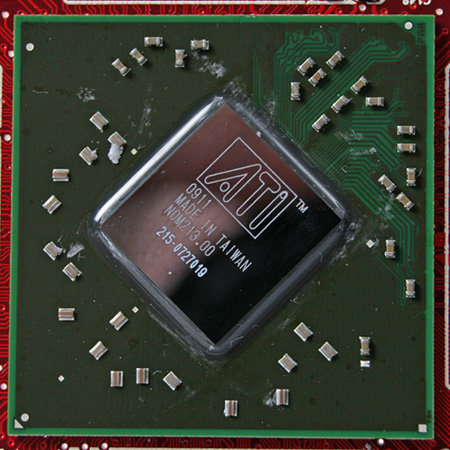AMD ATI Radeon HD 4770 512MB
Manufacturer: AMDUK Price (as reviewed): £83.05 (inc. VAT)
US Price (as reviewed): $99.99 (ex. Tax)
The mid-range market is a lucrative one, especially with the world’s economy the way it is right now. While Nvidia has focused very much on repurposing 18-month-old G92 technology to introduce a slew of ‘new’ graphics cards, AMD has decided to tackle the market in a different way.
First came the Radeon HD 4670 in September last year, which delivered performance rivalling the company’s previous generation Radeon HD 3850 for around £60.
Today, AMD is making another step forwards in the mid-range with the Radeon HD 4770 – a card that is set to be introduced for around £85 (based on the $99 MSRP we’ve been given).

The 4770 comes in at a price point that AMD has already occupied with its Radeon HD 4830 graphics card. Although we didn’t find an awful lot of value in the 4830 when it first launched because the 4850 was the better buy, the card has been a regular fixture in our monthly buyer’s guide over the past few months now that its value has improved.
The Radeon HD 4830 took a different approach to this price point than the 4770 – it used the existing RV770 die with two of the ten SIMD units disabled in what is generally known as a dead die SKU. These are typically used to further increase yields when one or more of the SIMD units are damaged.
The Radeon HD 4770 is a card the company is incredibly excited about – not least because the RV740 GPU under the heatsink is the world’s first GPU based on TSMC’s cutting edge 40nm process technology. Being based on the world’s most advanced manufacturing process technology means that AMD can pack a massive amount of performance into RV740 – it’s hard to believe there are 826 million transistors in the 143.75mm² die.
Although comparing performance between AMD’s and Nvidia’s architectures using GigaFLOPs as a metric is difficult, the Radeon HD 4770 packs a serious punch with 960 GigaFLOPs of compute power at its default clock speeds. This isn’t much less than the Radeon HD 4850, which just breaks through the 1.0 TeraFLOPs barrier, but it’s quite a lot more than the Radeon HD 4830’s 736 GigaFLOPs.
The target here is Nvidia’s GeForce 9800 GT – a card that most of you probably bought when it was known as the GeForce 8800 GT – and AMD has made some big claims about the Radeon HD 4770’s performance against the Nvidia competition. It’s not the only thing AMD has had to say about Nvidia’s current strategy – some harsh words were thrown in Nvidia’s direction, but it’s nothing we haven’t already said ourselves.
Join us as we evaluate the Radeon HD 4770’s performance against a range of competing cards from AMD and Nvidia.

MSI MPG Velox 100R Chassis Review
October 14 2021 | 15:04











Want to comment? Please log in.